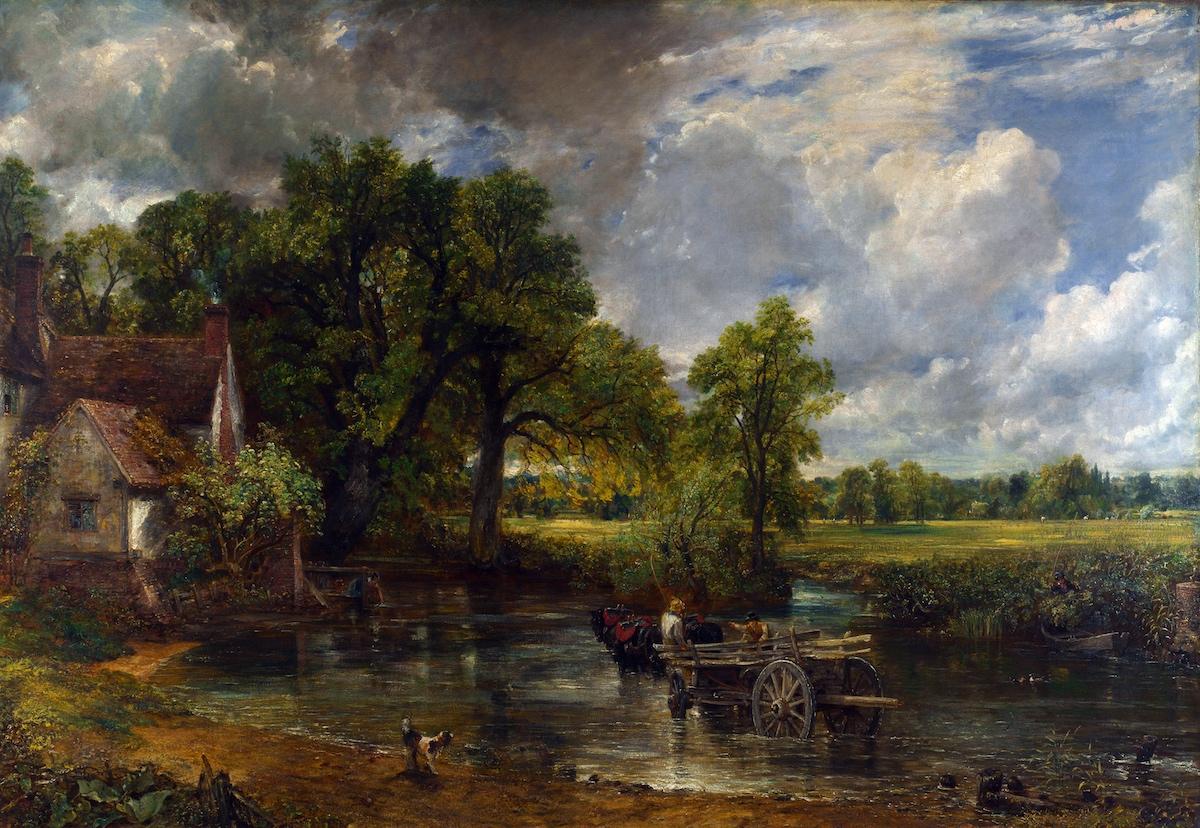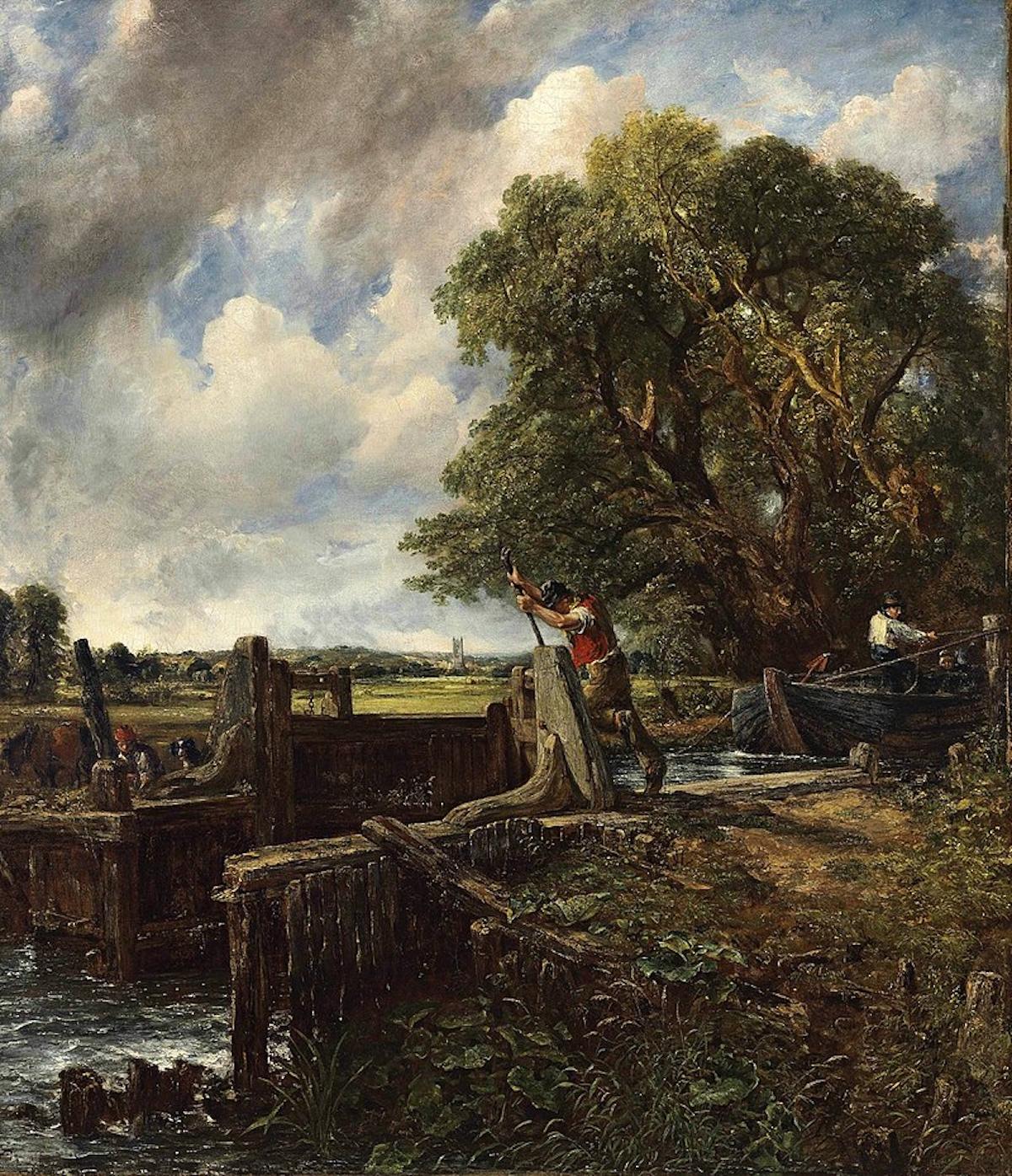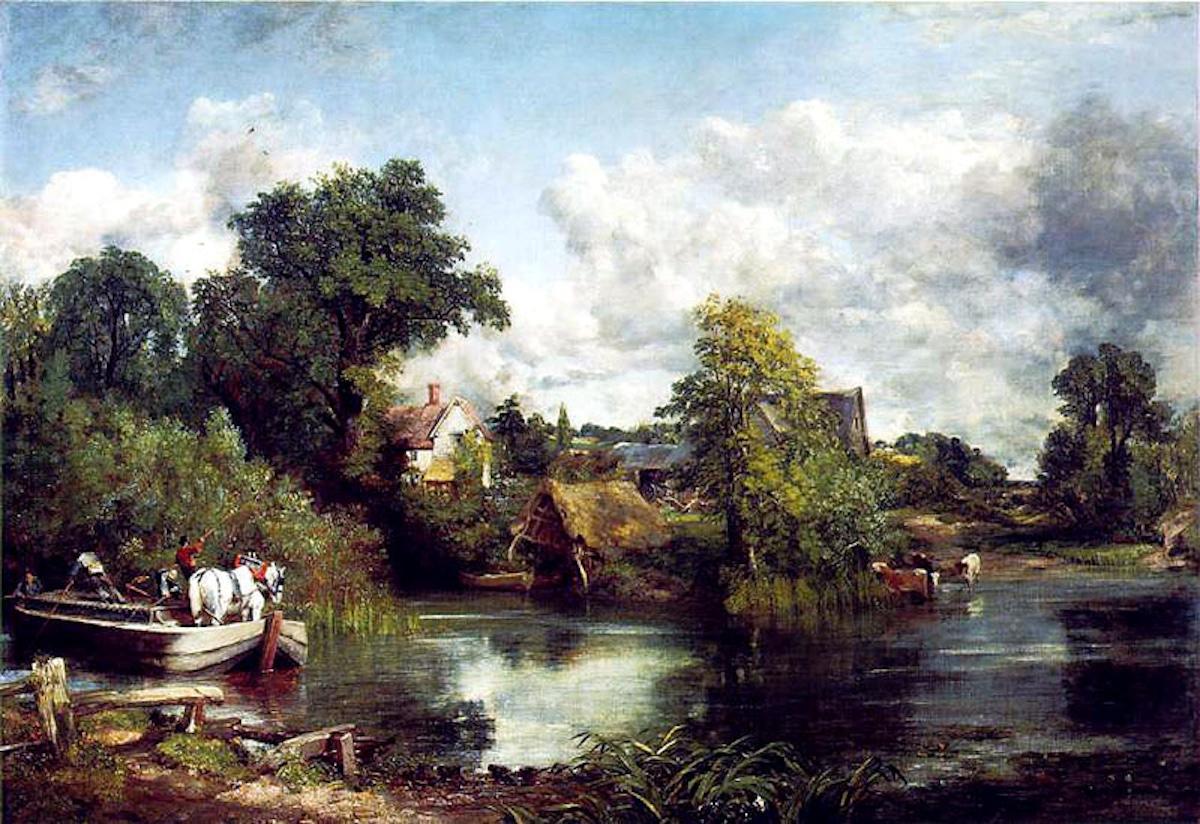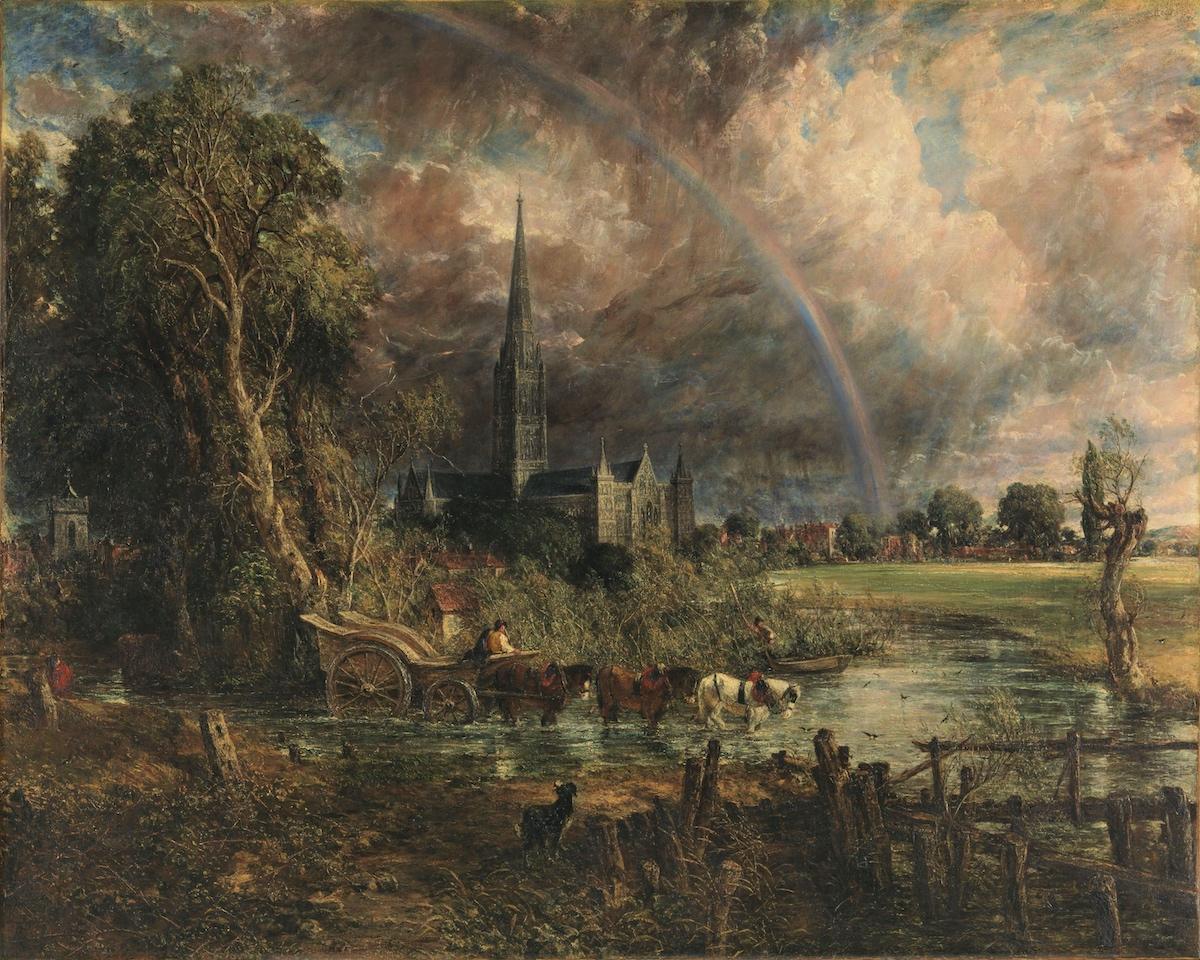At the Royal Academy, Constable spent most of his time studying and emulating the styles of the old masters. Among his favorites were Thomas Gainsborough, Claude Lorrain, Peter Paul Rubens, Annibale Carracci, and Jacob van Ruisdael, all of whom had a significant influence on his work. The influence of Claude Lorrain in particular was apparent throughout his career, evident in the freshness of light, color, and touch of his paintings.
Constable’s work almost entirely focuses on depicting the English countryside, and despite his moderate success later in his career, he never left the country. Cottages, small churches and lakes, and ordinary people at work in the countryside were his primary subjects, a distinctly English spin on Romantic-era paintings.




























